Selecting the appropriate engagement model is one of the most critical decisions when outsourcing software development. A development team requires the right strategy to construct successful software. It shapes how you collaborate with the vendor, defines project success, and influences budget and timelines. In this guide, we’ll break down the main types of engagement models in software development, helping you find the best way to collaborate and succeed.
Before diving into details, let's have an overview of 8 IT engagement models via the table below:
Models | Best for | Advantages | Disadvantages |
Fixed Price | Defined scope, strict budget | Predictable costs, low risk | Limited flexibility |
Time and Material (T&M) | Evolving requirements | Flexibility, adaptable | Less predictable costs |
Dedicated Team | Long-term projects | Full control, scalable resources | Higher costs |
Staff Augmentation | Short-term specialist needs | Flexible, cost-effective | Less project management control |
Managed Services | Full project outsourcing | Comprehensive service delivery | High vendor dependency |
Hybrid Engagement Model | Complex, mixed-requirement projects | Customized solutions | Complex management |
Offshore Development Center | Long-term, cost-effective projects | Cost-effective, extended hours | Communication challenges |
SLA/Milestone-Based Model | Process-oriented projects | Clear accountability | Requires well-defined milestones |
>> Read more:
- What is the V Model in Software Development?
- Software Development Life Cycles (SDLC)
What Is An Engagement Model in Software Development?
An engagement model in software development defines the working relationship between the client and the service provider during a project. It determines how tasks are divided, how payments are structured, and how responsibilities are allocated between both parties.
These models play a critical role in ensuring successful collaboration, particularly in outsourcing scenarios, by aligning expectations and promoting clear communication.
Selecting the right engagement model helps avoid costly misunderstandings, delays, and project overruns. By incorporating elements like risk management, proper resource allocation, Agile methodologies, and quality assurance, you can further enhance your project’s success.
8 Typical Engagement Models In Software Development
Fixed-Price Model
The Fixed-Price Model is a pricing agreement where the total cost of the project is predetermined and agreed upon before work begins. This model is often used for projects with well-defined scopes and clear requirements, making it a popular choice for clients seeking predictable costs and reduced financial risk.
Best For: Startups need to get projects done and test the market quickly for launching products.
Pros
- Predictable Costs: Clients have a clear understanding of the project budget, allowing for precise financial planning.
- Reduced Risk: Clients are protected from unexpected unforeseen expenses, as the agreed price covers all aspects of the project.
- Clear Timeline: With defined deliverables, the project timeline can be estimated more accurately, enabling better adherence to deadlines.
Cons
- Limited Flexibility: Any changes to the project scope can lead to additional costs or delays, especially if change control is not well-managed.
- Potential for Overwork: If project requirements change significantly, the contractor may need to allocate more resources and effort, potentially working beyond the agreed-upon budget.
- Reduced Motivation: Contractors may focus on completing the project within the agreed budget rather than optimizing processes, which could impact performance.
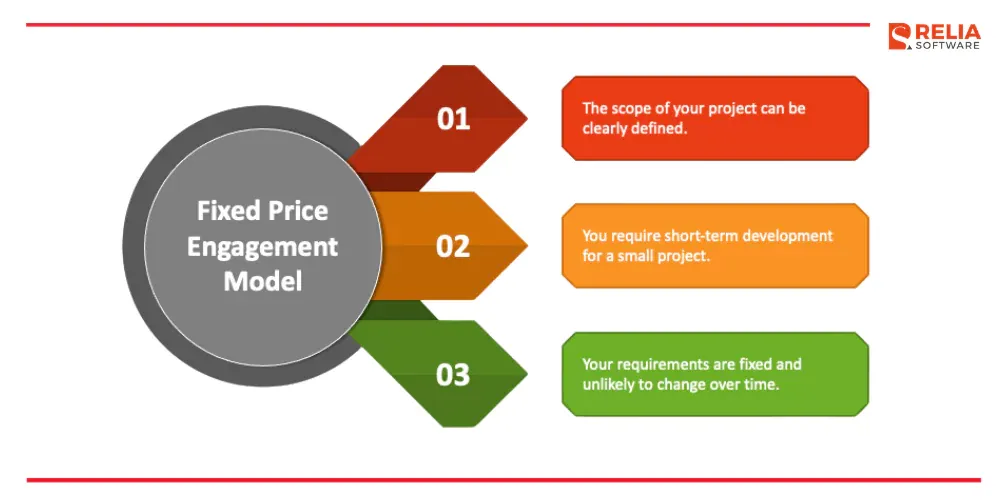
>> Read more: In-depth Guide To Software Development Pricing Models
Time & Material Model
The Time & Material Model is a type of project pricing agreement where the client pays for the contractor's labor and materials on an hourly or daily basis. It provides flexibility to accommodate changes in project scope or requirements as the project progresses. This makes it well-suited for Agile projects with uncertain or evolving deliverables, allowing for dynamic resource allocation, and adapting well to projects with ongoing scope changes.
Best For: Agile projects with evolving requirements and flexibility needs. Or else, projects live after the initial phase and projects have got funding.
Pros
- Flexibility: The model can easily accommodate changing project requirements, enabling real-time adjustments and ongoing iterations.
- No Cost Overruns: Clients only pay for the actual labor and materials used, reducing the risk of unexpected cost increases due to scope changes.
- Increased Motivation: Contractors have a greater incentive to optimize productivity and reduce labor costs, which can lead to more efficient project delivery.
Cons
- Unpredictable Costs: The final project cost can be difficult to estimate, leading to challenges in budget forecasting and financial planning.
- Potential for Overspending: Clients may not have a clear understanding of the project's total cost until it is completed, leading to risks of exceeding the initial budget.
- Increased Oversight: Clients may need to provide more oversight and performance management to ensure the project progresses efficiently and maintains the expected burn rate.
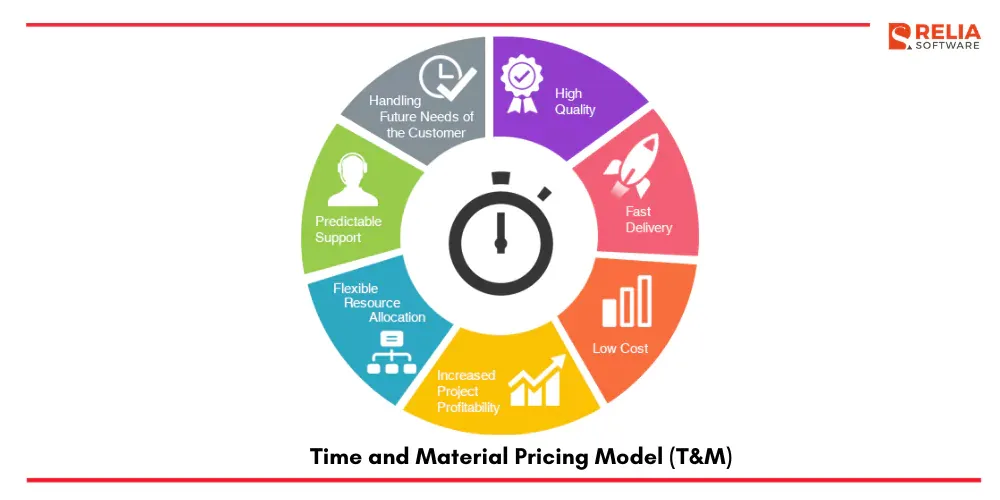
Dedicated Development Team
The dedicated team model is a project engagement approach where a dedicated team of professionals is assembled specifically for a client's project. This model is ideal for projects that require a deep understanding of the client’s business needs and long-term goals. This approach fosters strong collaboration and communication between the client and vendor while enabling focused resource allocation by dedicating efforts to a single project.
Best For: Long-term projects requiring ongoing development and sustained client involvement.
Pros
- Deep Understanding: The team gains a profound understanding of the client’s business and project goals, which enhances knowledge transfer and intellectual property (IP) protection.
- Improved Collaboration: Strong collaboration and communication create smoother workflows and faster decision-making between the client and vendor.
- Increased Efficiency: A team's exclusive focus on one project can lead to greater efficiency, higher productivity, and optimized performance metrics.
- Long-Term Partnership: This model establishes a foundation for a strong, long-term partnership between the client and vendor, enhancing trust and scalability over time.
Cons
- Higher Costs: Ongoing commitment of resources, including talent retention and contract management, can make this model more expensive.
- Potential for Overreliance: Clients may become overly dependent on the team, making it harder to scale or adapt the project, particularly as resource needs or technologies evolve.
- Risk of Turnover: If team members leave, it can cause disruptions, knowledge loss, and potentially decrease enthusiasm for the project.

Offshore Development Center
Offshore Development Centres (ODCs) are international facilities where companies set up development teams to produce software or other IT projects. They are often utilized to leverage cost-effective labor markets and access specialized skills that may not be available locally. This model is commonly used in IT outsourcing strategies to improve scalability, talent acquisition, and business flexibility.
Best For: Companies seeking to optimize cost management and access global talent pools while maintaining scalability in project execution.
Pros
- Cost Savings: Reduce labor costs by leveraging offshore locations, particularly in countries with lower wages for highly skilled professionals.
- Access to Talent: Gain access to a large pool of skilled IT professionals, enabling companies to acquire specialized skills and expand their capabilities.
- Scalability: Offer flexible scalability, allowing companies to easily scale teams up or down based on changing project requirements.
- Time Zone Advantages: Utilize time zone differences to enable round-the-clock development and support, ensuring continuous project progress.
- Proactive: Clients can apply their working culture and set up their development environment, with their security measures for the workers to ensure the working quality.
Cons
- Cultural Differences: Cultural differences can pose challenges in communication and collaboration, affecting project alignment and outcomes.
- Language Barriers: Language barriers can potentially lead to misunderstandings or delays in project timelines.
- Data Security Concerns: Protecting sensitive data requires rigorous data security and privacy measures. Security threats can be reduced by following local laws and IP protection guidelines.
>> Read more: How to Set Up An Offshore Development Center in Viet Nam?

Managed Services
Managed Services is a business model where a third-party provider delivers IT services on behalf of a client. It allows clients to focus on their core business while the provider manages and maintains their IT infrastructure. This arrangement often includes responsibilities such as proactive monitoring, IT asset management, and cybersecurity, ensuring that the client's systems run smoothly with minimal downtime.
Best For: Organizations seeking to outsource complete project management and execution, including those that require business continuity and compliance with industry regulations.
Pros
- Cost Reduction: Eliminates the need for in-house IT staff and infrastructure, as well as reducing capital expenditures through cost management.
- Improved Efficiency: The provider's expertise and proactive monitoring can lead to improved IT efficiency and performance, reduced downtime, and optimized resource utilization.
- Scalability: Managed Services can be easily scaled up or down to meet changing business needs, providing flexibility in resource allocation and contract management.
- Focus on Core Business: Clients can focus on their core business activities without being distracted by IT concerns, ensuring that strategic initiatives receive full attention.
Cons
- Loss of Control: Clients may lose some control over their IT infrastructure and operations, as key functions are managed externally.
- Vendor Lock-in: Clients may become dependent on the provider and find it difficult to switch to another vendor, especially when bound by long-term service level agreements (SLAs) and contracts.
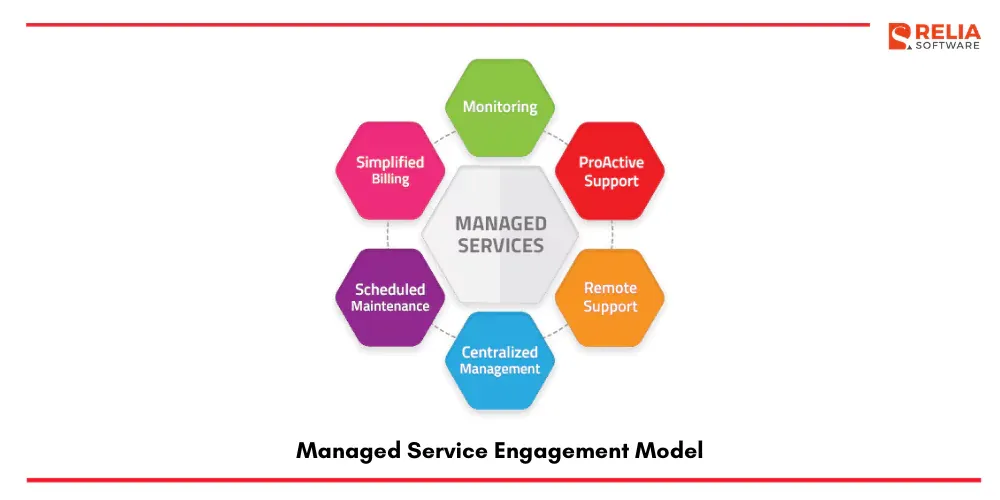
>> Read more: The Comparison of Staff Augmentation VS Managed Services
IT Staff Augmentation
IT Staff Augmentation is a service model where a company hires additional IT professionals on a temporary or contract basis to supplement their existing in-house IT team. This model enables businesses to scale their IT resources to meet fluctuating demands or fill specific skill gaps. It is often used for short-term engagements or specialized projects, enabling businesses to add talent as needed and enhance resource management.
Best For: Projects requiring specialized skills for short-term engagements and companies seeking flexibility in their talent acquisition strategy.
Pros
- Scalability: IT staff augmentation provides the flexibility to scale IT resources up or down as needed, allowing for quick adjustments to changing project demands.
- Cost-Effective: It can be more cost-effective than hiring full-time employees, especially for short-term projects, as it reduces overhead costs associated with full-time staff.
- Access to Specialized Skills: Augmentation enables businesses to access specialized skills that may not be available in-house, improving the overall capability of the IT team.
Cons
- Potential for Misalignment: A disconnect between the augmented staff and the in-house team may cause team dynamics and collaboration issues.
- Lack of Long-Term Commitment: Augmented employees may not be as committed to the company's long-term goals, affecting talent retention and performance.
- Knowledge Transfer Challenges: Transferring knowledge and best practices between augmented staff and the in-house team can be difficult, leading to potential gaps in continuity.
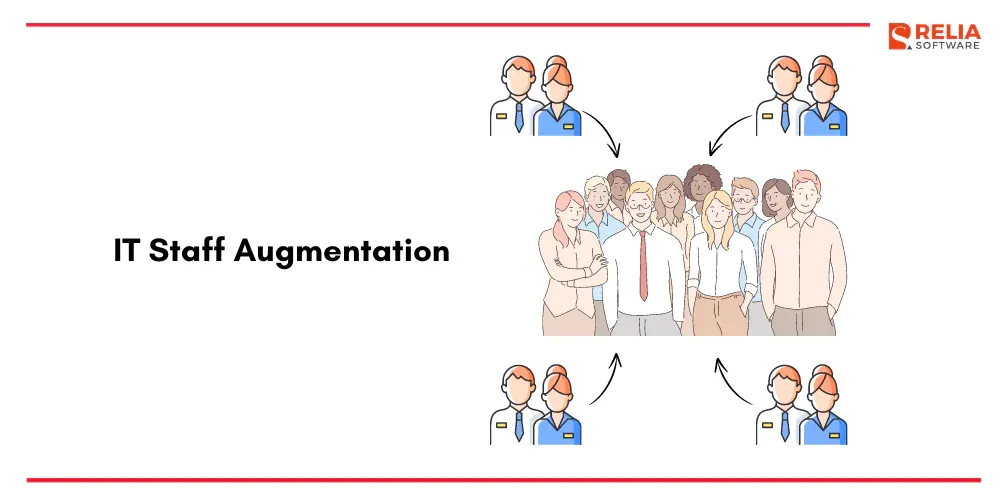
>> Read more:
- Staff Augmentation VS. Outsourcing: Which Is Better?
- Comparison of Staff Augmentation VS. Independent Contractors
- Top 11 Staff Augmentation Companies in Vietnam
Hybrid Model
The Hybrid Model is a project management approach that combines elements of traditional Waterfall and Agile methodologies. It offers a flexible and adaptable framework that can be tailored to meet the specific needs of a project.
This model combines iterative development cycles with a phased approach, allowing teams to balance predictable timelines with evolving requirements. This model optimizes both scalability and performance management, making it versatile for various types of projects.
Best For: Complex projects with a mix of predictable and evolving requirements, requiring a balance between structure and adaptability.
Pros
Flexibility: Scalability and the ability to transition between the Waterfall model and Agile approaches make the hybrid model suitable for many project types.
Risk Mitigation: The phased approach facilitates early identification and mitigation of risks, allowing for effective change management and risk reduction at each stage.
Improved Quality: Iterative development and testing ensure the final product meets high-quality standards and satisfies stakeholder expectations.
Faster Time to Market: The hybrid model uses milestone tracking and Agile sprint planning to accelerate the delivery of key features, allowing for faster customer value realization.
Cons
- Complexity: Combining Waterfall and Agile can complicate projects, requiring strong communication and effective teamwork across functions.
- Cultural Challenges: Differences in teamwork approaches, particularly when blending methodologies, can create alignment challenges if team members come from diverse backgrounds and experiences.
- Increased Oversight: Monitoring performance across two methodologies requires more oversight and coordination than following a single approach, demanding higher levels of management and cooperation.

SLA/Milestone-Based Model
An SLA/Milestone-Based Model is a project management approach focusing on achieving specific outcomes or milestones within predefined timelines. This model aligns with contract management practices by structuring the project around clear Service Level Agreements (SLAs) and Key Performance Indicators (KPIs) to ensure accountability and quality.
Best For: Organizations that require clear expectations and performance management in outsourcing or vendor partnerships.
Pros
- Clear Expectations: Set clear expectations for both the client and the service provider, improving stakeholder management through specific KPIs and regular deliverable reviews.
- Accountability: Encourages accountability on both sides, with performance-based rewards and penalties for missing milestones, ensuring commitments are met.
- Performance-Based Rewards: Payments structures can be designed to incentivize the service provider to deliver high-quality results, promoting efficiency and alignment with project goals.
Cons
- Complexity: This model can be complex to implement, particularly for large or complex projects that require extensive tracking and contract management.
- Potential for Disputes: SLAs and milestones may be disputed, requiring appropriate dispute resolution methods.
- Limited Flexibility: If the project scope changes mid-course or new requests arise, this model may be less flexible compared to other approaches.
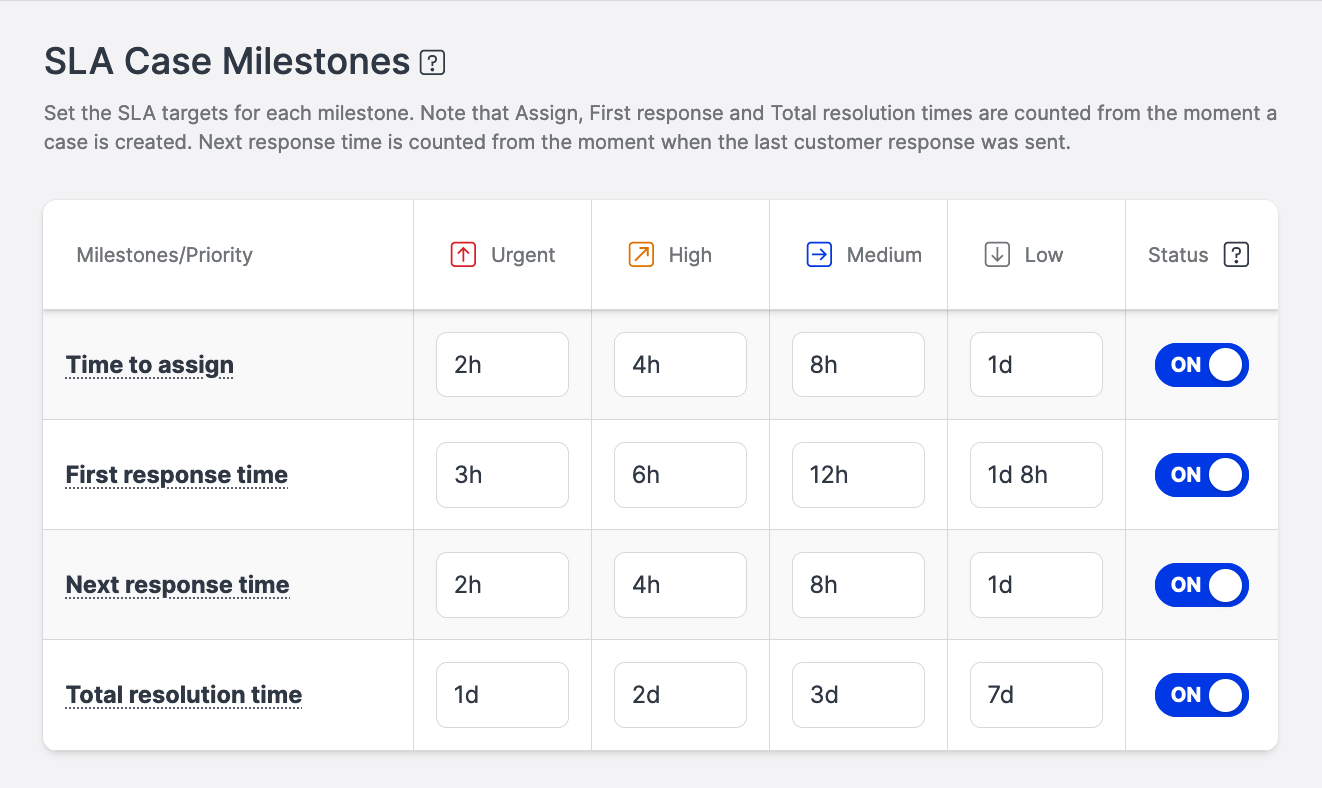
How To Choose The Right Engagement Model For Your Project?
To make an informed decision, carefully consider the following factors:
- Define Your Project Scope and Goals: Clearly outline the project’s objectives, deliverables, and timeline. Assess the project’s complexity and potential risks by involving cross-functional teams to ensure all relevant aspects are covered.
- Evaluate Your Budget: Determine the available budget for the project and consider potential cost overruns. Allocate contingency funds to mitigate financial risks and ensure resources are available for unexpected needs.
- Assess Your In-House Capabilities: Evaluate your team’s skills, resources, and capacity. Identify any skill gaps or resource constraints that may impact project execution, and consider whether vendor management or IT staff augmentation might be necessary.
- Consider Risk Tolerance: Determine your organization’s willingness to accept financial risk. Assess the potential impact of project delays or failures on your business and ensure that risk management strategies are in place to address these challenges.
- Evaluate Flexibility Needs: Determine the level of flexibility required for project changes. If scope creep or evolving requirements are likely, Agile methodologies might be a better fit to accommodate these changes.
- Analyze Long-Term Perspective: Evaluate your relationship with the development team and consider the potential for future collaborations. Assess the long-term value of building strong vendor relationships that can support ongoing projects and business continuity.
- Consult with Stakeholders: Involve key stakeholders in the decision-making process. Gather input and perspectives from different departments to ensure alignment with organizational goals, and implement effective communication strategies to keep everyone informed and engaged.
By carefully considering these factors, you can select the engagement model that best aligns with your project’s specific needs and your organization’s objectives, ensuring successful project execution and long-term benefits.
Trends in Engagement Models
Hybrid Models
More companies are adopting hybrid models that blend fixed-price and flexible engagement methods. This approach helps balance cost control with flexibility, allowing for customized solutions that meet the specific needs of different projects. This trend also emphasizes the importance of performance management and efficient workflow automation to streamline project execution.
AI-Driven Models
Artificial Intelligence (AI) is playing an increasingly influential role, particularly in automating project management tasks and optimizing delivery processes. AI-driven models incorporate predictive analytics to forecast potential challenges and improve decision-making. This trend also supports innovation in areas like workflow automation and performance management.
>> Read more:
- Unlock the Potential of Automation in Software Development
- AI in Software Testing: How It Works, Benefits & Challenges
- Top 17 Best AI Apps For Individuals and Businesses
- Dive Deep into The Four Key Principles of Responsible AI
- Which Case Would Benefit from Explainable AI Principles?
- Top 10 Best AI Development Tools for Software Developers
- Will AI Replace Software Engineers Altogether?
- What is the Responsibility of Developers using Generative AI?
Remote-First Engagement
With the global shift towards remote work, engagement models now often prioritize distributed teams and virtual collaboration. This trend increases flexibility and scalability by using cloud solutions, virtual workspaces, and advanced collaboration platforms to manage cross-functional teams. However, it raises concerns related to cybersecurity and data privacy regulations, necessitating stronger protective measures.
>> Read more: An In-Depth Guide To Hire Remote Developers
Conclusion
As we've explored the various engagement models in software development, it's evident that no single approach is universally superior. The optimal choice depends on the specific needs of your project, your team's capabilities, and your organization's risk tolerance. By carefully evaluating your project’s requirements, budget, and flexibility needs, you can choose a model that aligns with your goals. Remember to consider emerging trends that may influence your decision, and don’t hesitate to combine models to suit your unique needs.
>>> Follow and Contact Relia Software for more information!
- development

